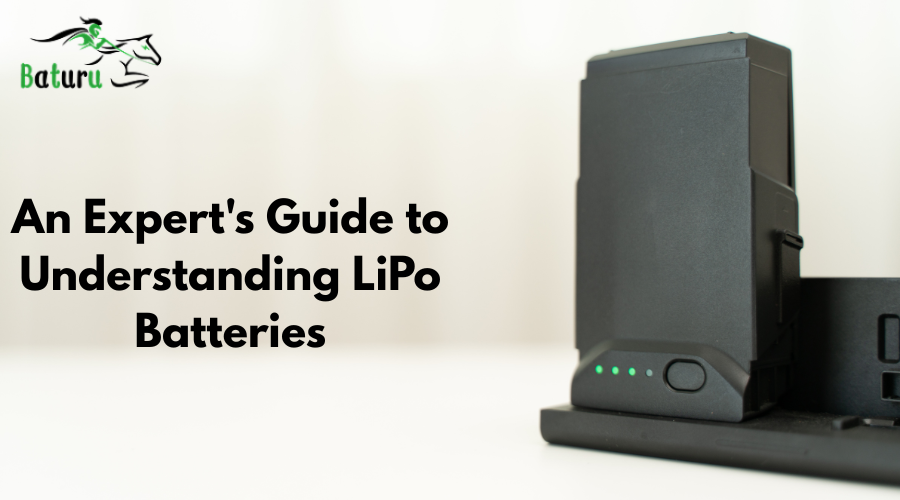
12-Aug-2025
LipO Batteries aren’t exactly the kind of thing most people get excited about… unless you’re the type who geeks out over tech, performance, and power efficiency. And if you’re reading this, chances are you’re exactly that type. LiPo batteries which is a short way of saying short Lithium Polymer have been quietly taking over as the go-to energy source for a diverse range of applications, from lightweight gadgets like drones to heavy-duty industrial machines. These batteries pack a lot in a small package.
By the time you’re done reading this guide, you won’t just understand LiPo batteries you’ll probably never look at another battery the same way again.
If you’ve ever picked up a sleek drone, RC car, or even certain industrial tools and wondered how something so compact can deliver such a high power, then the chances are that they have been fitted with a cutting edge LiPo battery. They’re part of the lithium-ion battery family but with one distinct feature that makes them unique: the electrolyte is in a polymer form, either gel-like or solid.
What is so important about this feature. Only that, it makes the battery lighter, slimmer, and more adaptable in shape compared to your old-school cylindrical cells. No bulky casings are part of this configuration. Just pure, customizable energy storage.
For engineers and manufacturers, LiPo batteries are known to be the ultimate win-win solution of energy sources. They deliver high energy density, which is a fancy way of saying “they hold a lot of juice for their size.” Their slimmer profile means that devices can be made smaller and still run flawlessly on ample power provided by these batteries. And when you’re in an industry where every gram or cubic centimeter matters, that’s a game changer.
What really makes these batteries truly innovative is that they have a relatively low self-discharge rate. This means saying farewell to situations where the battery loses power just sitting on a shelf. LiPos minimize that, so the equipment stays ready for longer. And let’s not forget their ability to deliver high discharge currents meaning they can feed hungry motors and demanding electronics without breaking a sweat.
Here’s where things get interesting. Let’s stack LiPos against some of the other usual suspects and see how they fare.
|
Feature |
LiPo Batteries |
NiMH Batteries |
Lead-Acid Batteries |
Li-ion Batteries |
|
Energy Density |
High |
Medium |
Low |
High |
|
Weight |
Very light |
Moderate |
Heavy |
Light |
|
Shape Flexibility |
High |
Low |
Low |
Moderate |
|
Discharge Rate |
Very high |
Medium |
Low |
Moderate to high |
|
Cost |
Higher |
Lower |
Low |
Higher |
|
Maintenance |
Requires careful handling |
Low |
Moderate |
Moderate |
|
Cycle Life |
Moderate |
High |
Low |
High |
|
Industrial Suitability |
Excellent for compact, high-demand systems |
Good for moderate load systems |
Best for stationary backup systems |
Excellent for portable electronics |
It’s no longer just RC hobbyists or drone enthusiasts driving LiPo demand. The industrial sector has been ramping up adoption at a staggering pace. A recent industry analysis found that global demand for LiPo batteries is growing at an annual rate exceeding 12%, with industrial automation and robotics accounting for a large chunk of that growth. In particular, portable inspection equipment, autonomous guided vehicles (AGVs), and certain types of power tools are leaning heavily on LiPo technology for its lightweight profile and high discharge rates.
Some market reports have shown that in specialized applications—like drone-assisted pipeline inspection or compact medical devices—LiPos now hold over 40% of the battery market share. Manufacturers are chasing LiPo integration because they can streamline form factors without sacrificing power. For sectors where downtime or heavy equipment weight can cost thousands per hour, that’s an irresistible trade-off.
Now here’s where we need to get real. LiPo batteries can be incredible performers, but they don’t tolerate neglect. They need proper charging cycles, balanced voltage, and careful storage. Mistreat them and you risk swelling, leakage, or the dreaded fire hazard.
Industrial environments often have strict protocols, but when LiPos are involved, that attention to detail needs to go up a notch. You want trained staff handling them, appropriate charging stations, and regular health checks for every battery in circulation.
If you want your LiPos to last and keep delivering consistent output, think of them like high-performance sports cars. Dumping cheap fuel into a Ferrari and hoping for the best will not suffice because premium care is the way to supercharge the performance. Some preventive measures to take for peak performance is avoiding deep discharges and refraining from overcharging them. Storage care also plays a role as storing them carelessly in environments that do not have a moderate temperature.
And here’s a bonus tip: in industrial settings where multiple battery packs are cycled daily, track usage data. Knowing which packs are performing better and which are showing early signs of wear can save you money and downtime.
We’re only scratching the surface of what LiPo batteries can do. With ongoing research into improving safety, boosting cycle life, and reducing costs, it’s not a stretch to think they might become the dominant power source for a huge range of industrial applications in the next decade. Solid-state LiPo variations are the new emerging models of LiPo batteries. They provide greater safety in handling while still delivering a power-packed energy output that is needed for the next generation of gadgets.
So next time you see a sleek device that’s surprisingly light yet ridiculously powerful, then i be shocked if a LiPo battery is at the heart of it. The industrial world has clearly taken notice, and it’s looking like LiPos aren’t just a passing trend they’re setting the new standard of energy delivery.